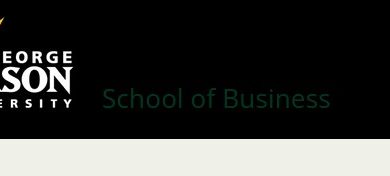Work-Based Learning in High School
A framework for ensuring that high school special education students develop the skills they need to join the workforce with confidence.
As a special educator, I have one goal in mind: to help students gain the skills and knowledge necessary to be as independent and fulfilled as possible in their adult lives. After teaching at the middle school level for over a decade, I decided to make the leap to high school and specialize in work-based learning in order to help facilitate lifelong success for my students.
Work-based learning is the intersection of project-based learning and social and emotional learning, as it invites students to work on real-world tasks that will facilitate their ability to obtain employment. The social and emotional learning component? Developing soft or interpersonal skills is necessary to thrive at work.
It’s incredibly rewarding to help students secure their first job, complete their first tax forms, open their first bank account, and make their first purchases with their own money.
I’ve seen countless students with special education services move from a negative self-image and disengagement from school to increased self-worth and a new sense of success after accomplishing the task of attaining employment. They start to believe in themselves much stronger as they realize their capacity to participate in the workplace.
Giving Students the Tools They Need
Over my years as a work coordinator, I’ve learned many helpful approaches from seasoned colleagues and personal research. Here are some helpful tools and strategies that may support student success.
Over-helping helps no one. Too often, students with special education services develop over-dependence on adults at school. Many have grown up with extra support, and they may not realize that they can perform countless tasks on their own. Work-based learning is a chance for students to find their full capacity with independence. As a rule, I never say or do anything a student could say or do themselves.
For example, rather than calling an employer to see if they’re hiring, I train the student on how to make that phone call on their own. Decreasing support and facilitating independence is critical to ensuring lifelong student success, and work-based learning is the perfect platform for this.
Connect the classroom to the workplace. Work-based learning programs should always include a classroom component. Each state has different requirements for work-based learning programs, but many require a “career seminar” class to support student learning in tandem with on-the-job experiences. Career seminars focus on explicit instruction in areas such as safety, labor laws, the job-seeking process, choosing a career, and employability skills.
I run my career seminar class as if I’m a manager at work. For example, students have a scheduled break halfway through class, and this is the only time they can check their phones. Students clock in when they enter the room by entering an assigned number in a Google Form. The more we can practice the activities and habits they’ll need at work, the better. This supports their ability to maintain employment for the long haul.
Share your story. What was your first job in high school? I’m guessing you didn’t start your work life as a teacher. Share your work experience story with students, including both the challenges and the rewards. What came easily to you? Were there bumps in the road, and how did you overcome them? How did you wind up in teaching, including your particular content area?
Invite students to share their own employment stories if they’re already working. Conversations about successes at work can deepen relationships and motivate other students who may feel inspired to join the workforce and enjoy the benefits this can bring.
Skills pay the bills. When you approach your instruction through a work-based learning lens, it’s all about transferable skills that will stay with students—which all working adults must learn and practice to keep a job. These include abilities like communication, conflict resolution, accepting constructive criticism, organization, and adaptability.
With such skills in mind, many classroom situations can become teachable moments geared toward work-readiness, including undesirable behavior choices. Rather than engaging in power struggles with students, remind them that you have the same goal: their future success and employability. From this place, you can engage in problem-solving together. Continuously bring it back to their skills for work, rather than school rules or policies they may find arbitrary.
Don’t stop believing. Cultivating hope, resilience, and a growth mindset in your students will support them tremendously in their future attempts to join the workforce. The path to their dream career may be marred with obstacles and challenges along the way. In order to overcome them, students need to believe in themselves and commit to persevering through setbacks.
As educators, we can help foster their success when we convey that we truly believe in them and in their potential. In today’s job market, there’s a job to suit most every student. There are countless programs available to create avenues for individuals with disabilities to gain meaningful paid employment. Share this with students, believe in their potential, and convey your commitment to build their capacity.
I’m so grateful to be a coordinator of work-based learning. Countless students have reconnected over the years to tell me their own success stories, which were launched by their high school work program experiences. Whether it’s a restaurant employee who moved up to manager, a child care aide who moved up to teaching, or an apprentice in the trades who became a foreman, work-based learning planted the first seeds to grow success. Work-based learning is an extremely valuable opportunity to bring out student strengths and help them leverage those strengths to lasting lifelong rewards.
Source: https://www.edutopia.org/article/work-based-learning-high-school




